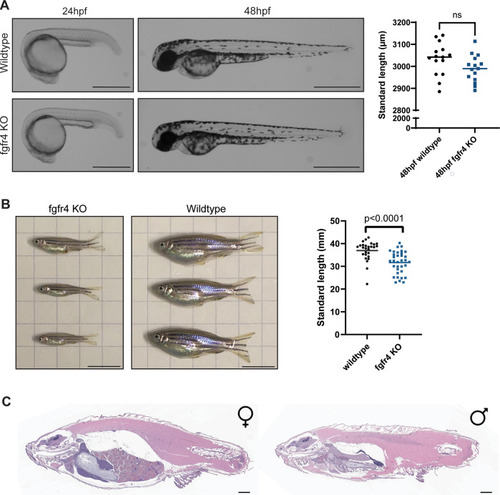Fig 3
- ID
- ZDB-FIG-241125-30
- Publication
- Harrison et al., 2024 - Engineering an fgfr4 knockout zebrafish to study its role in development and disease
- Other Figures
- All Figure Page
- Back to All Figure Page
|
Homozygous (A) Representative images from a phenotypic analysis of embryonic zebrafish. Homozygous |

